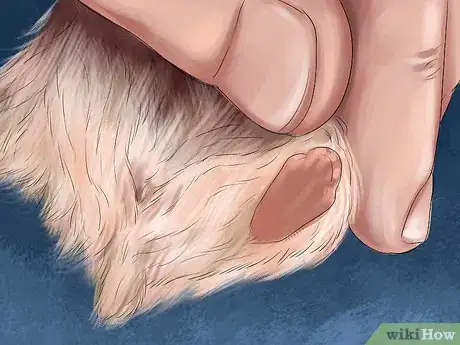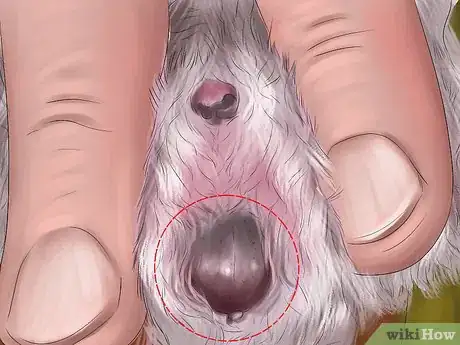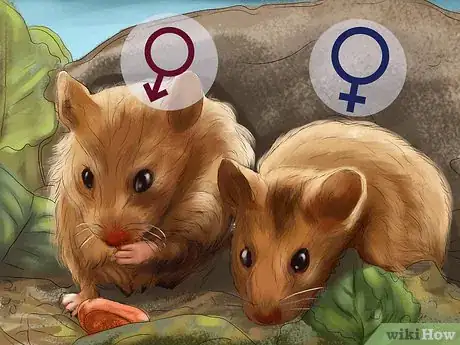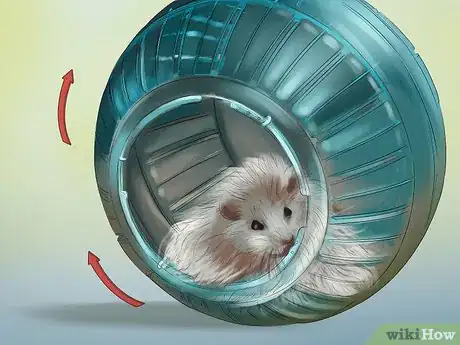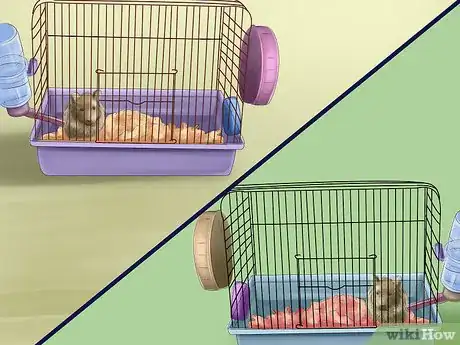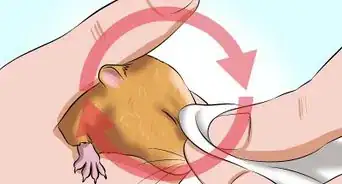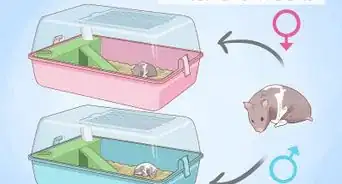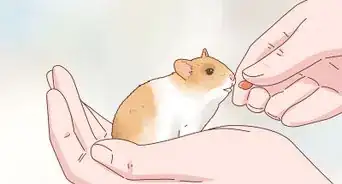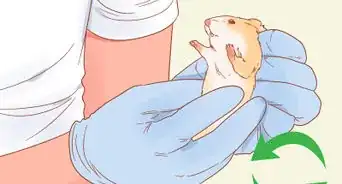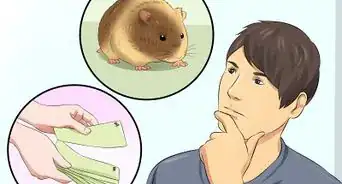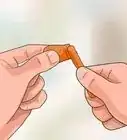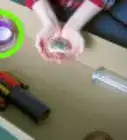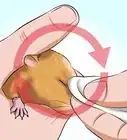This article was co-authored by Pippa Elliott, MRCVS. Dr. Elliott, BVMS, MRCVS is a veterinarian with over 30 years of experience in veterinary surgery and companion animal practice. She graduated from the University of Glasgow in 1987 with a degree in veterinary medicine and surgery. She has worked at the same animal clinic in her hometown for over 20 years.
wikiHow marks an article as reader-approved once it receives enough positive feedback. In this case, 90% of readers who voted found the article helpful, earning it our reader-approved status.
This article has been viewed 136,085 times.
It is important to know the sex of your hamsters if you have more than one and plan on keeping them in the same cage. You do not want your hamsters to end up breeding, especially if you're not equipped to care for a litter. You can examine your hamster's genitals directly to determine sex. If you can't determine sex this way, other factors such as size and scent glands can help. Be safe when sexing your hamster. You want to avoid accidents or injuries during the process.
Steps
Examining Your Hamster's Genitals
-
1Flip your hamster over carefully. You want to pick your hamster up gently and then turn it on its back. Hamsters, especially young hamster, may resist this process. Go slowly and be gentle.[1]
- Cup your hand and allow your hamster to get into your hand. Once your hamster is seated on the palm of your hand, gently flip it over.
- You can clasp your hand gently around the hamster's body and slowly flip it backwards. Without squeezing, hold your hamster securely. Hamsters do not like being flipped over and will likely kick and resist.
-
2Locate the genitals. A hamster's genitals are located near its tail. You may have to gently spread apart your hamster's legs to get a clear look. Hamster's have two holes near their tail, one for the anus and another for the genitals.[2]
- You may also have to part the fur in order to get a look at your hamster's genitals.
- If your hamster is squirming, you may need a friend to assist.
-
3Check the distance between the two openings. Genitalia can be differentiated by the distance between the two holes. With male hamsters, there will be a clear distance between the anal and genital opening. With female hamsters, the two openings will be side-by-side. They may be so close they appear to be touching.[3]
Looking at Other Physical Signs
-
1Check for nipples. It is not always possible to view a hamster's genitals. If you have your hamster flipped over, thick fur or excessive kicking can prevent you from noticing the genitals. If this is the case, look for nipples. Nipples are usually an indication your hamster is female.[4]
- Run your finger gently along the underside of your hamster.
- If you have a female, you should feel two rows of nipples on the stomach. You can part the hair to see down to your hamster's skin to confirm the presence of nipples.
- If you do not find nipples, your hamster may be male. However, young female hamsters may also have less pronounced nipples that are harder to detect.
-
2Look for testicles. If your hamster will not allow you to flip it over, observe the hamster as it's moving around. If your hamster is male, testicles may be overtly visible at times.[5]
- In an older male hamster, testicles will give the rear end a pronounced and pointed appearance. There will also be noticeable swelling near the penile area by the tail.
- The rear of a female hamster lacks bulges. It's much smoother in appearance.
- Testicles may be more difficult to locate in younger hamsters.
-
3Consider size. As your hamster grows, sex will be easier to determine. Male hamsters are both longer and wider than female hamsters. If your hamster is noticeably bigger than other hamsters in the cage, you may have a male.[6]
Determining Sex Safely
-
1Do not attempt to determine sex before 3 or 4 weeks. You will not be able to tell sex before this age. If your hamster has a litter, wait until the babies are 3 or 4 weeks old to determine sex. Their genitals will not be fully formed before this age, and trying to determine sex before this will only stress them out.[7]
-
2Do not flip a hamster over it if resists. The best way to determine a hamster's sex is to examine its genitals. However, not all hamsters will allow you to flip them over. If a hamster is squirming, biting, or resisting excessively, do not attempt to flip it over. Find other ways to examine the genitals.[8]
- Try putting your hamster on a glass surface and looking at its genitals through this surface. You could, for example, place your hamster on a glass table or in a glass ball.
- If you drop your hamster, you can injure it. While sex determination is important, it's not worth risking the health of your hamster.
-
3Separate dwarf hamsters around 4 weeks old. If you want to prevent breeding, you should separate hamsters by sex when they reach 4 weeks old. Have two separate cages ready for the female and male hamsters.[9]
- Mothers and daughters can safely be paired together.
Warnings
- When holding the hamster, always hold it over some surface so it does not have too far to fall. If a hamster wriggles out of your hands, you don't want it to fall too far.⧼thumbs_response⧽
References
- ↑ http://russiandwarfhamster.org/russian-dwarf-hamster-sexing-3-tricks-to-males-from-females/
- ↑ http://animals.mom.me/gender-hamster-1143.html
- ↑ http://animals.mom.me/gender-hamster-1143.html
- ↑ http://animals.mom.me/gender-hamster-1143.html
- ↑ http://animals.mom.me/gender-hamster-1143.html
- ↑ http://russiandwarfhamster.org/russian-dwarf-hamster-sexing-3-tricks-to-males-from-females/
- ↑ http://russiandwarfhamsters.tripod.com/hams/id19.html
- ↑ http://russiandwarfhamsters.tripod.com/hams/id19.html
- ↑ https://hamsters-uk.org/content/view/68

